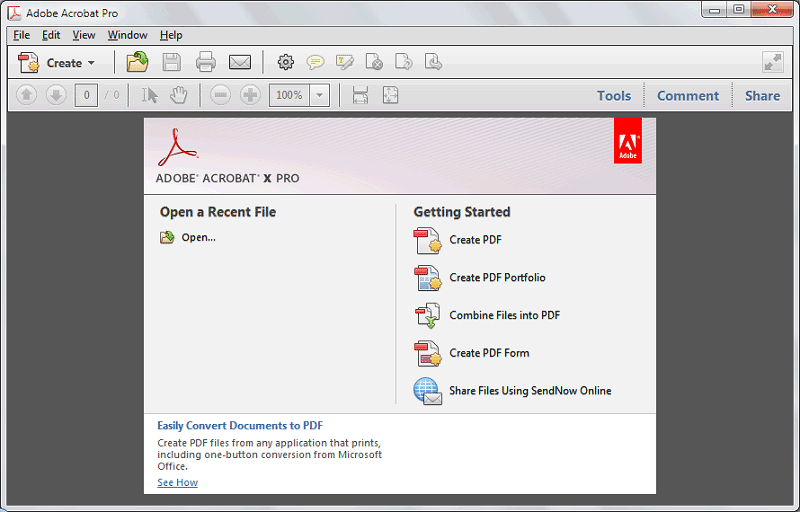
So, to learn JavaScript for Acrobat, you just take any introductory JavaScript book, class or tutorial and just read and learn the parts about the core language, and ignore the rest.
ADOBE ACROBAT X PDF
JavaScript running in the browser knows about web pages, and elements on a web page, HTML connections, and more web specific things, whereas the Acrobat environment does not care about these things, but knows about PDF documents, annotations, form fields and more things that are important in the world of PDF. And this is where things differ completely between different JavaScript environments. On top of this core language, to actually interact with the application that is hosting the JavaScript environment (web browser, Adobe Acrobat, Node.js server, …) we need to add some application specific “stuff” to the mix. It covers the syntax of the language, basic types like numbers and booleans, and more complex types like strings or arrays, but also “library” objects like Date, RegEx and JSON, so when you have to perform date calculations for example, you can do this by just looking up what methods the Date object provides. Any JavaScript implementation consists of two parts:Īll JavaScript implementations have the first part in common, and as long as we ignore changes over time in that core language part, any script written with just these core language elements should run in any JavaScript environment. Adobe uses it as it’s “ExtendScript” to automate different Creative Cloud applications (Photoshop, InDesign, Illustrator, …), but also in Adobe Acrobat (and that’s very likely why you are here, reading this blog post). It is now available for a number of different environments. Since then, it came a long way, and left it’s browser-only heritage behind.

ADOBE ACROBAT X FREE
If you want to learn more about it’s history, feel free to explore the JavaScript Wikipedia page. So let’s take a step back and see how one can learn to program in JavaScript for Acrobat from scratch.īack in the early days of the World Wide Web, JavaScript was created in 1995 as an extension language for the Netscape browser.


… that is if you are already a JavaScript expert, and know where exactly the boundary between the core language and these browser specific extensions are. Programming JavaScript for Acrobat is simple: Just use the JavaScript core language, avoid any browser specific extensions to the JavaScript language and become familiar with the Acrobat JavaScript API… A Book Just About JavaScript for Adobe Acrobat.This is a bit longer than usual, so let me add a table of contents here that allows you to jump straight to the section you are interested in.


 0 kommentar(er)
0 kommentar(er)
